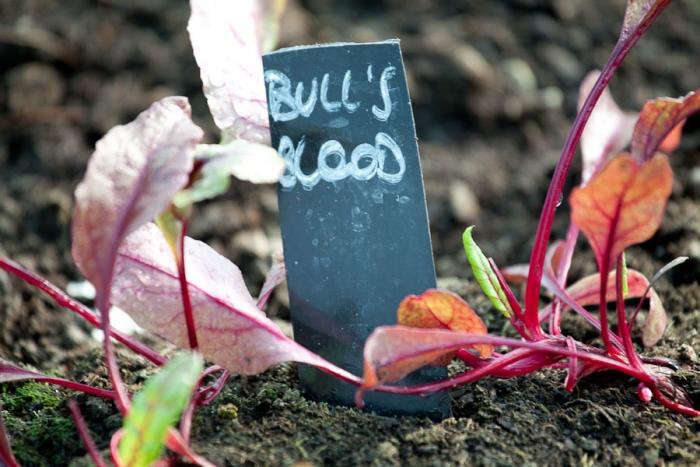Why should we draw distinctions between herbs and weeds, if both contain vitamins and both are delicious?
This is the sort of question Bart Belmans asks. He tends a a small nursery about 20 minutes away from Antwerp, where he champions long-forgotten and lost varieties of edible plants. We spotted Belmans at work on Coffeeklatch, where our friends writer Magali Elali and photographer Bart Kiggen spent a day in the garden (and in the greenhouse) with him:
Photographs by Bart Kiggen.

Above: The wild herbs and unusual varieties of vegetables that Belmans grows at his Saguisorba nursery are on the wishlist of many of Antwerp’s top chefs. But he doesn’t discriminate. “Recently, someone from a Chip Shop came to ask if I could grow parsley in the garden. The man was looking for fresh tartar sauce to accompany the fries,” Belmans told Coffeeklatch. “Speaking of a change of mentality! That’s fantastic!”

Above: “A few years ago, this was a horse meadow,” says Belmans, whose crops now include rainbow chard.

Above: “Previous to the time of the potatoes, there were more nutritious tubers, like wild chestnuts, sugar carrots and there was a vast knowledge of medicinal plants. But this knowledge got lost,” says Belmans. “We wanted to operate differently, so we went back to the origins, to the old vegetable families to purely work on flavor and nutrients. And so we get the best restaurants as our customers. Each plant grows at its own pace and the range of forgotten vegetables is growing every day.”

Above: All vegetables are allowed to bloom–that is, to go to seed–in Belmans’ gardens. “The flower of the vegetable is often better than the plant itself,” he says. “When the root is not useful, we use the stem. When the stem is not good, we use the leaf, or the flower and then the fruit.”

Above: Inside Belmans’ greenhouse, strawberry plants grow in hanging pots.

Above: From late November to mid February, Belmans closes the gardens. “We seal everything to protect it from frost,” he told Coffeeklatch. “In calm periods I teach, I go to agriculture & garden fairs and search the web for new crops. I’m always on the lookout for novelties.”

Above: “We apply little mechanization in the sense that we recycle what others throw away,” says Belmans, who works with business partner Piet De Bolle. “Nothing is new and most machines we fixed and assembled ourselves.”

Above: All plants have a story, says Belmans. All spiders, too.

Above: “We love to get plants out of context and let them grow,” says Belmans. “We also brew our own beer, Pimpernelle, and a bakery in the neighborhood uses it to make bread.”

Above: Belmans’ Felco pruners.

Above: Belmans’ gardens grow on the site of a former horse meadow. “With what I grow, I can provide for my own living,” he says. “If I had to close the gates behind me, I think two years will pass until I’d have to go to a grocery store.
(N.B.: For more inspiration about things you can grow to eat, see “From Farm to … Brooklyn.”)












Have a Question or Comment About This Post?
Join the conversation (1)